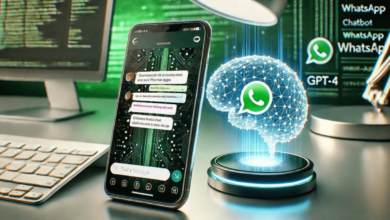Text to Image in Storytelling: Breathing Life Into Words

The integration of text to image technology in storytelling represents a significant evolution in how narratives are constructed and experienced. By translating written descriptions into compelling visuals, creators enhance the ability of audiences to engage with characters and themes on a deeper level. This synergy not only enriches the emotional landscape of stories but also raises questions about the implications for traditional storytelling methods and the future of narrative forms. What unforeseen possibilities might this technology unlock for authors and audiences alike?
The Power of Visual Storytelling
How can a single image evoke emotions and convey complex narratives more effectively than words alone?
The visual impact of an image can forge an immediate emotional connection, transcending language barriers. It captures raw feelings and intricate stories, allowing viewers to immerse themselves in the experience.
In a world yearning for freedom, visual storytelling liberates imagination and invites personal interpretations, enriching our collective understanding.
See also: Top AI Tools for Face Swap Technology in 2025
How Text to Image Works
The convergence of text and imagery offers a powerful tool for storytelling, allowing narratives to be expressed in innovative ways.
Through advanced text generation algorithms and sophisticated image synthesis techniques, creators can transform written descriptions into vivid visuals.
This seamless integration not only enhances engagement but also invites audiences to explore new realms of creativity, breathing life into words and enriching the storytelling experience.
Applications in Modern Narratives
Numerous applications of text-to-image technology are reshaping modern narratives across various mediums.
This innovation enhances character development by visually representing personalities and emotions, fostering deeper connections with audiences.
Furthermore, it amplifies narrative immersion, allowing viewers to experience stories in vivid detail, transforming written words into captivating visuals.
As imagination intertwines with technology, storytelling evolves, inviting freedom in creative expression.
Future Trends and Innovations
As technology continues to advance, the future of text-to-image integration in storytelling promises to revolutionize the way narratives are crafted and experienced.
Innovations in augmented reality will create immersive experiences that allow audiences to step into stories, interact with characters, and shape plots.
This evolution will empower storytellers to blend imagination with technology, fostering deeper connections and enhancing the freedom of narrative exploration.
Conclusion
The integration of text to image technology in storytelling offers profound implications for narrative construction. By transforming words into visuals, creators can unlock new dimensions of engagement, enhancing character depth and emotional resonance. As advancements continue, the potential for this innovative approach to redefine narrative experiences becomes increasingly apparent. This evolution in storytelling not only captivates audiences but also challenges traditional interpretations, suggesting that the fusion of text and imagery may indeed represent the future of narrative art.





